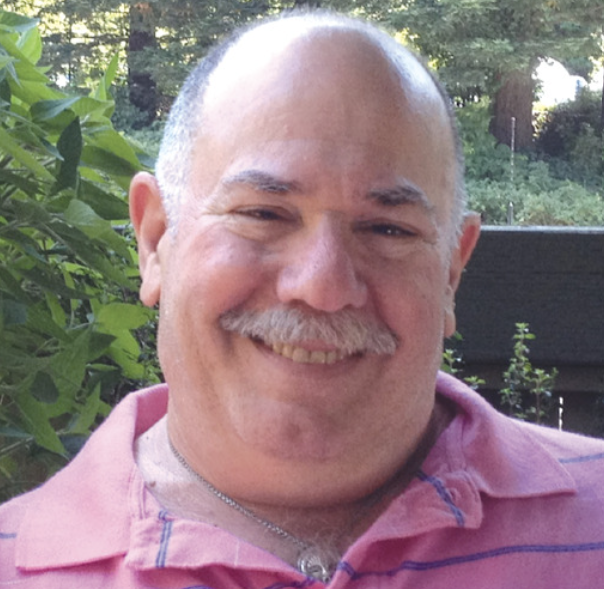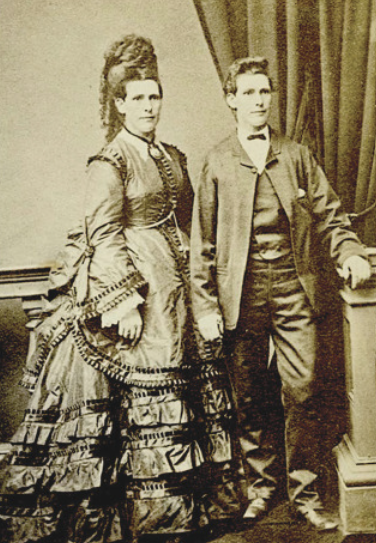
By Dr. Bill Lipsky –
The Bendigo Advertiser was shocked, shocked by what it headlined as an “Extraordinary Case of Concealment of Sex” in its September 4, 1879, issue. Reporting the “story of local resident Edward De Lacy Evans,” the Victoria, Australia, newspaper described it as “unprecedented in the annals of the whole world.” What amazed and startled the newspaper most, however, was not that he “has for 20 years passed for a man in various parts of the colony,” but during that time he married three different women.
A month later, Melbourne’s Illustrated Australian News (October 1, 1879) was equally astonished by “one of the most extraordinary instances of successful personation ever recorded.” Although De Lacy Evans, “disguised in men’s attire, worked on various goldfields as a miner,” and although his “somewhat effeminate face and figure at times excited comment, yet [he] also contrived to evade detection all that time, and probably [his] secret might have died with [him] so far as the public were concerned but for an accident.”

The accident occurred several months earlier, when Evans was injured at work in the mines. On July 21, 1879, his brother-in-law, Jean Baptiste Loridan, took him to the Bendigo Hospital, claiming he had become “dangerous to others.” Refusing to take a bath, Evans left the institution and went home, but was brought before two police court magistrates the next day, who agreed with a medical evaluation that he suffered from “softening of the brain” and ordered him returned to the hospital.
Five weeks later, he was transferred to the Kew Lunatic Asylum in Melbourne, some 90 miles away. Still refusing to be bathed, he was restrained by attendants who stripped him and prepared to wash him against his will. This time, however, they made an unexpected discovery: De Lacy Evans had female anatomy, which created an issue of its own. They had no authority to detain a woman, so they sent him back to Bendigo on the next day’s morning train. By then the newspapers had the story.
Traveling under the name Ellen Tremayne, Evans arrived at Melbourne as an “assisted immigrant,” one of 242 women on the Ocean Monarch, on June 23, 1856. At sea she shared a berth with Mary Delahunty, whom she may have known before the ship departed Ireland. Whether or not she told any of the other passengers, as some of them later claimed, that she was going to marry her shipmate after they reached Australia, the two exchanged vows in Melbourne’s Saint Francis’ Church some months later.

Soon after the wedding, Evans moved to Blackwood, where he worked as a miner; Delahunty joined him there in 1858. Some who knew the couple later claimed that they “did not live comfortably together.” For whatever reason, Delahunty left Evans in 1862 to marry Lyman Oatman Hart, an American mining surveyor in Daylesford. Knowing Evans’ birth identity, she countered charges of bigamy by telling each and all that Evans, in fact, was a woman. That same year, Evans married Sarah Moore, who died five years later.
Later, The Bendigo Advertiser thought it was “perfectly astonishing that such an imposition could have been successfully carried on in a civilized community for such a length of time and that the girl Sarah Moore could have died without the imposture being brought to light,” but apparently no one in their small community had—or shared—any suspicions. In fact, it was Moore’s sister who introduced Evans to Julia Marquand, his third wife. “The pair became enamored,” and they were married on September 18, 1868.

After ten years of matrimony, Marquand gave birth to a baby girl, Julia Mary; Evans was listed on her registry certificate as her father. Sadly, “his emotional and physical health deteriorated” over the months that followed. The diagnosis by journalists: her desire to “seem a man” and “the eventual overwhelming strain” of pursuing her “masquerade” for so many years. “The woman is evidently insane … as no one but a mad woman would have been guilty of such egregious folly.” The cure: a forced return to femininity.
After four months of hospital supervision, The Bendigo Independent reported on December 1, 1879, “She is now quite healthy in mind and body, and her appearance entirely feminine. She states that she will not again return to male clothing, and it is extremely improbable that she will … . The shame that attended the discovery of her secret, and the constant dread that she would always be in of its repetition, afford every reason for the belief that she will not again un-sex herself.” She never did.
Only a few days later, on December 5, Marquand appeared in the Bendigo Police Court to accuse Loridan, her sister’s husband, of leaving “his illegitimate child without the means of support.” Wearing women’s clothes, Evans testified as a witness for the prosecution. “Yes, I have seen him at my house,” she stated, then spoke directly to the defendant: “That is a fact. You are the father of the child, and here I am.” Even so, “the court found Marquand’s case unproven.”
Loridan left Bendigo after the trial, but Marquand stayed on, disgraced, for the rest of her life; she never remarried. Evans eventually moved into the Immigrants Home in Melbourne, where she lived for the next 21 years. Allowed to wear only women’s clothes, she refused to discuss her former life with anyone. Now known as Mrs. Edward de Lacy Evans, she ironically became her own fourth wife. When she died in 1901, The Melbourne Argus called “the deception one of the most extraordinary on record.”
The story of Edward De Lacy Evans became so well known that, for many years, whenever the newspapers wrote about other Australians identified as female at birth, but living their lives as men, they were described as “another De Lacy Evans,” or “a second De Lacy Evans,” or “emulating the bad example of De Lacy Evans.” Their reasons, like his, were almost always attributed to “misadventure,” deception, or insanity. How did he understand himself? The facts of his life are well established, but his truth may never be known.
Bill Lipsky, Ph.D., author of “LGBTQ+ Trailblazers of San Francisco” (2023) and “Gay and Lesbian San Francisco” (2006), is a member of the Rainbow Honor Walk board of directors.
Faces From Our LGBTQ Past
Published on October 23, 2025
Recent Comments